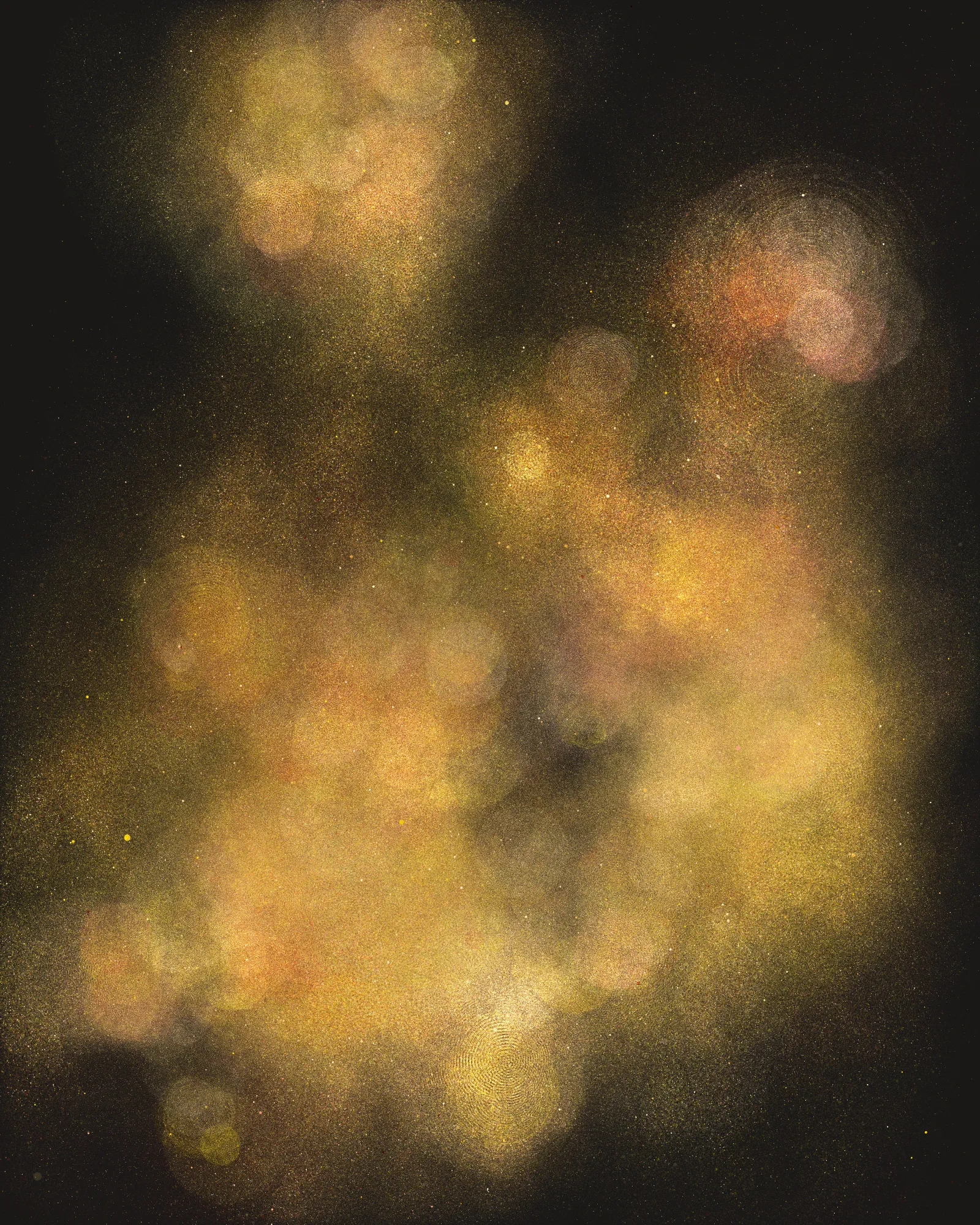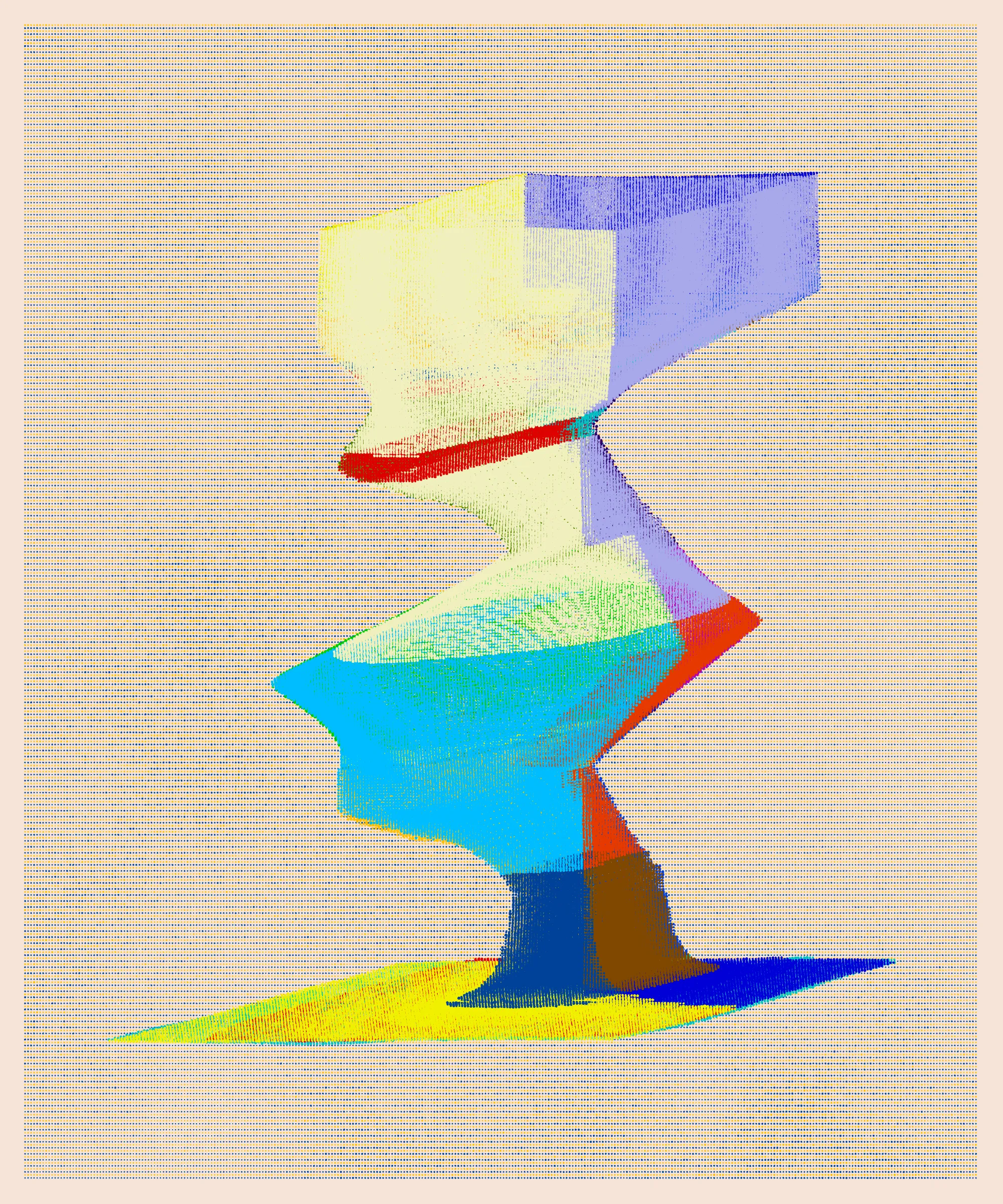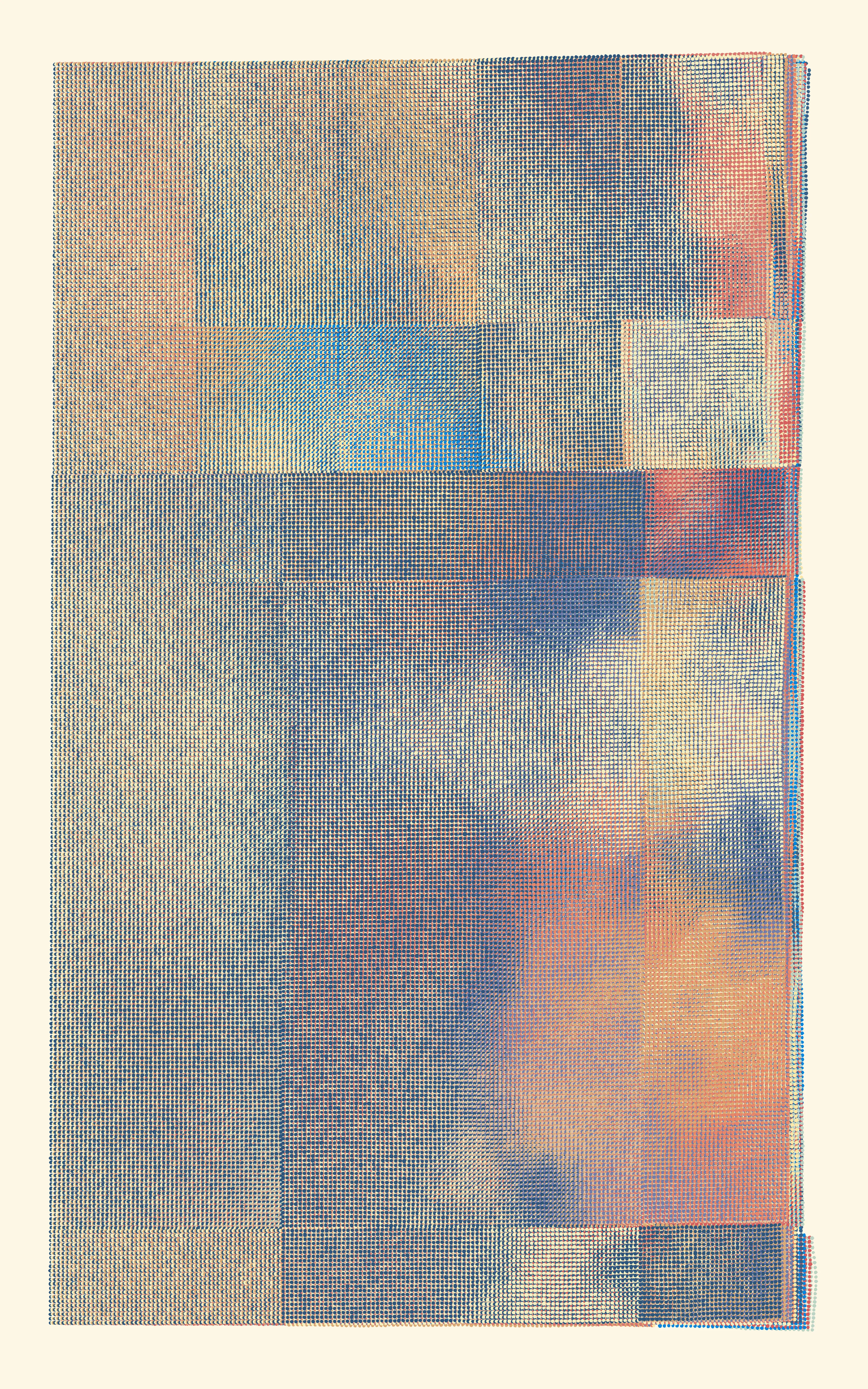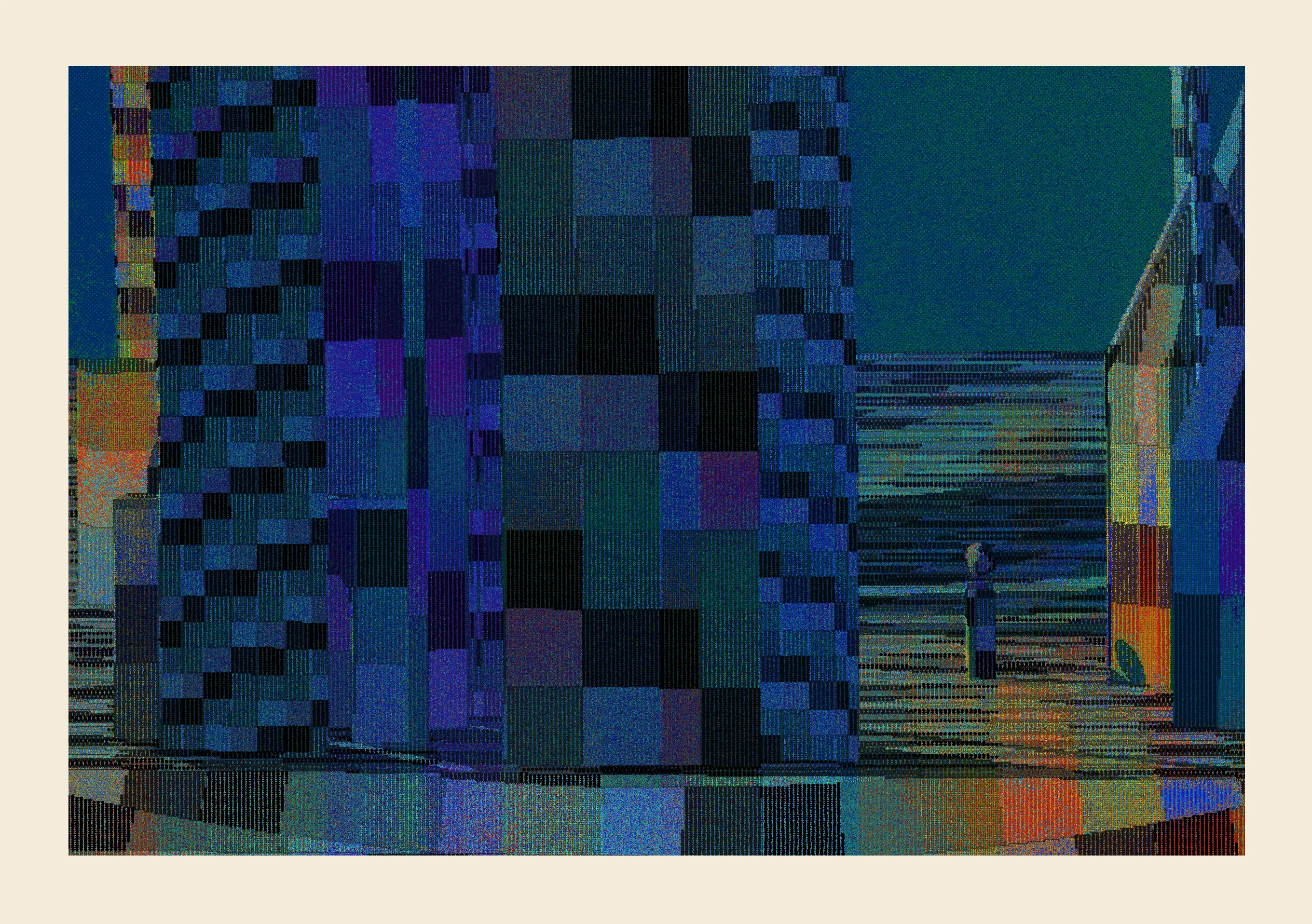Subscribe to get the latest on artists, exhibitions and more.
Erik Swahn on the Evolution of his Practice

Leyla Fakhr: The excitement and anticipation around your new series Fields is incredible. Can you give us some insight into its evolution and what motivated you to create it?
Erik Swahn: In my last work, “Punktwelt”, I worked with abstract objects, set in an extremely reduced landscape of only one or two color fields, sometimes a horizon – in my imagination somewhere between the Commodore 64 game worlds of my childhood and the type of metaphysical landscapes you can see in de Chirico paintings. In “Fields”, I went further into that reduced landscape, kept the halftone-like process, but did away with the parallel projection and objects until I was left with only fields of colors.

I discovered that slightly displacing layers of dots so that there were local variations in which colors dominated a part of the canvas resulted in chromatic effects that really intrigued me. If “Punktwelt” was like looking very closely at a CRT screen or halftone print, this was almost like the structural coloration that you can see in insects. Iridescent, metallic colors, and interesting atmospheric effects that arose from the scale-like microstructure.
In the end, it became an exploration of how very simple, slightly irregular grids can conjure up these abstract, atmospheric landscapes, still loaded with light and reflections, like a very primitive form of landscape painting.
Leyla Fakhr: You come from an architectural background. How do you draw upon your architectural training and experience to shape your approach to generative art, and what distinguishing perspectives or insights do you think it brings to your art practice ?
Erik Swahn: Almost all of my generative work until this exhibition, has been spatial in some way. It can all be read as walls, enclosures, openings and built form, although abstracted. Apart from the architectural themes, I’m also very influenced by the field of computational design and algorithmic design, which is like a parallel track to generative art, only applied to architecture and design. In one way, my generative art practice is a direct continuation of that interest in computational design.
Leyla Fakhr: Can you elaborate on your creative process? How do you balance planning and spontaneity?
Erik Swahn: My creative process is largely unplanned. It is more about finding something rather than following a path or goal. It’s the finding of the unintended that motivates me. That said, I might start with an idea or end result in mind, but then veer off course and become more intrigued by something else.
I usually start with sketches and text and go from that to pseudocode, then code. Although coding can be a slow process, there is room for improvisation, and it can be quite fast. Especially when you have a good enough structure that you can start breaking it. I’ve often found that mistakes and bugs are the things I like the most about pieces. I sometimes find bugs, fix them, and the piece is just worse without them, so I go back and work with them instead. So the theme of imperfections really applies here, it’s more about creating faults than solving problems.

Leyla Fakhr: How do you decide on the parameters and variables for your work? And when do you decide it is complete?
Erik Swahn: In a generative piece, I think of the different iterations as different faces of the same work, so there is a slight tug of war between cohesion and variation. The different faces need to speak about the same thing but in slightly different voices. I often introduce variations that I later remove, because they somehow don’t belong there. Or rather, they change the nature of the piece. Sometimes that new piece might even be better, but it can take some time to recognize.
I don’t want my pieces to be overloaded, so completeness for me is more about simplicity and clarity. With the computing power that comes with coding, it can be tempting to make things as complicated and technically advanced as possible, but I tend to like very simple, even bad or stupid ideas. It’s the attention given to the particular qualities of the piece, not perfection, that makes it complete in my view.

Leyla Fakhr: What sources of inspiration do you draw from? Are there any artists, writers, thinkers living or dead that influence your work?
Erik Swahn: In my latest works with color, I have been particularly interested in Klee, Itten and their contemporaries, so I’m about a century behind! Or even more, looking at Chevreul and other color theorists. But some things are just worthy of constant rediscovery, and art history and the history of science is full of loose threads with proto-generative approaches that deserve to be continued.

Leyla Fakhr: The field of generative art is rapidly evolving, and it is exciting to see its potential impact on the art world. In your opinion, how do you think generative art fits into the broader art landscape?
Erik Swahn: To me, generative art is not a separate thing. It just means there is an abstraction of process. There might be differences in practice and tools, but it builds on foundations from all over art history, just as any other contemporary art. And for me, growing up with computers and programming since childhood, code is as natural a tool as anything else to produce images, form, movement and so on. Even though coding has existed in art for a long time now, and might still be at odds with the image of how an artist is supposed to work, I can only see it appearing less and less foreign in art.
I also think that the generative series as a form might influence and seep into the greater art world, even in non-computer based art. Communities form around generative series, it’s quite a social thing, because it’s one work of art and many works of art at the same time.
And I don’t really see generative art as something exclusively digital either. The screen is just an interface to the computer, just as a printer or plotter is. Or a mouse or a robot, for that matter. So to me, generative art isn’t about digital or analog, pixel or paper, emitted light or reflected light, it’s just about process, and I think that paradigm will spread.
Erik Swahn
Erik Swahn (b. 1977) is an artist and architect based in Sweden exploring the minute details of procedural art. Initially, Swahn’s artistic practice included physical mediums such as acrylic, ink and charcoal before transitioning to creative coding. His practice investigates colour, pigment blending and overlapping forms with a pointillist style.
Alongside Swahn’s digital art practice, he teaches...



